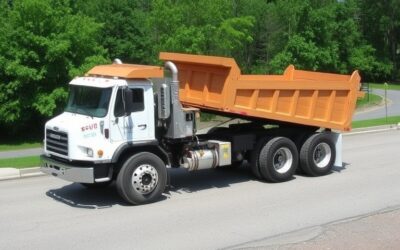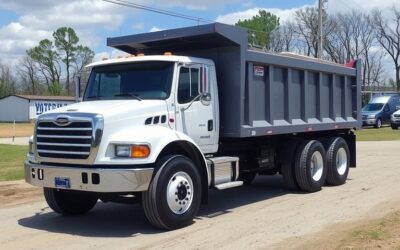Stability in heavy-duty trucks is key to safe operations, protecting drivers, boosting efficiency, and ensuring the safety of everyone on the road.
Heavy loads can make trucks prone to tipping, leading to serious accidents and operational delays. So, understanding the key practices to maintain stability is crucial for anyone involved in truck operations.
By leveraging technologies along with diligent maintenance and safe driving practices, we can significantly improve the stability of heavy duty trucks and ensure safer operations.
Understanding Stability Challenges in Heavy Duty Trucks
Maintaining stability in heavy duty trucks is complicated due to several factors. Uneven loads are a primary challenge. These trucks carry various materials such as gravel, sand, or large construction debris. If the load shifts during transit, it can easily unbalance the truck, increasing the risk of tipping.
Another challenge is the terrain. Trucks often travel over rough or uneven surfaces, like construction sites or poorly maintained roads. These surfaces can cause sudden jolts or shifts, making it harder to keep the truck stable. Sharp turns or sudden stops on these terrains further elevate the risk of instability.
Weather conditions also pose significant stability challenges. Rain, snow, or ice can make roads slippery, causing trucks to lose traction. Windy conditions can push against the large surfaces of the trucks, making it difficult to maintain control. Each of these factors demands careful planning and execution to ensure the truck remains stable throughout its journey.
Regular Maintenance and Inspections for Enhanced Stability
Regular maintenance and thorough inspections are vital to enhance the stability of heavy duty trucks. Scheduling routine checks can identify and fix issues before they become serious problems. Key areas to focus on include the suspension system, brakes, and tires. These components are crucial for maintaining balance and control.
- Suspension System: The suspension system absorbs shocks from the road, ensuring the truck remains stable. Inspecting it for wear and tear is essential. Replacing worn-out parts can prevent sudden failures that might cause the truck to become unstable.
- Brakes: Brakes are critical for safe stopping and slowing down. Regularly checking and maintaining the brake system ensures it functions correctly, preventing accidents caused by brake failure. This includes inspecting brake pads, rotors, and fluids.
- Tires: Tires are the truck’s primary contact with the road. Ensuring they are in good condition and properly inflated helps maintain stability. Regularly check for signs of wear and ensure tires are replaced as needed to avoid blowouts.
Besides these components, it’s essential to inspect the truck’s frame and body regularly for any signs of damage or weaknesses. Addressing these issues proactively can prevent them from compromising the truck’s stability. Regular maintenance and inspections not only enhance stability but also prolong the life of the truck, making it a worthy investment.
Adopting Safe Driving Practices to Prevent Tipping
Driving practices significantly influence the stability of heavy duty trucks. Safe driving starts with proper training. Drivers should understand the mechanics of their vehicles and how to handle them under various conditions. Here are some crucial practices:
- Load Management: Properly distributing the load is essential. Avoid overloading the truck and ensure the load is evenly distributed. This prevents one side from becoming heavier than the other, which can lead to tipping.
- Speed Control: Maintaining a safe speed is crucial, especially when carrying heavy loads. High speeds increase the risk of tipping, particularly on curves or sharp turns. Drivers should reduce speed in these situations to maintain control.
- Braking Techniques: Sudden braking can cause instability. Drivers should use gentle and controlled braking, especially when the truck is heavily loaded. Allowing for longer stopping distances and gradually reducing speed can prevent the truck from swaying or tipping.
- Turns and Maneuvers: Taking turns slowly and smoothly is key. Avoid making sharp, abrupt movements. Wider turns reduce the risk of tipping, especially in top-heavy trucks.
In addition to these practices, continuous awareness and focused driving are necessary. Distractions can lead to delayed reactions, increasing the risk of accidents. Ensuring that drivers are well-rested and alert reduces the chances of errors that can compromise the truck’s stability.
Leveraging Technology to Maintain Truck Stability
Modern technology offers several solutions to enhance the stability of heavy duty trucks. These technologies provide real-time monitoring and automatic adjustments, helping to maintain balance and prevent accidents. Here are some key technologies that can be leveraged:
- Automatic Lowering Units: These units detect tipping risks and automatically lower the load, keeping the truck stable. This technology reduces human error and ensures immediate response to unstable conditions.
- Stability Control Systems: These systems monitor the truck’s movements and make necessary adjustments to keep it stable. They can control braking and throttle to maintain balance, especially on uneven or slippery terrains.
- Telematics Systems: Telematics can provide real-time data on the truck’s performance and condition. This information helps in monitoring the truck’s stability and alerts the driver to any potential issues before they become serious problems.
- Load Sensors: These sensors measure the distribution and weight of the load, ensuring it remains balanced. They provide alerts if the load shifts or becomes uneven, allowing the driver to take corrective action.
Integrating these technologies into the truck fleet can significantly enhance safety and efficiency. They provide an additional layer of protection, reducing the risks associated with heavy-duty trucking.
Stay in Control: Master Heavy Duty Truck Stability
Maintaining stability in heavy duty trucks is crucial for safe and efficient operations. Understanding the challenges, such as uneven loads and difficult terrains, is the first step. Regular maintenance and safe driving practices help you avoid tipping risks and keep your trucks stable. By integrating advanced technologies like automatic lowering units and stability control systems, we can further enhance truck stability.
These combined efforts ensure the drivers’ safety and protect other road users and the goods being transported. As we continue into 2024, prioritizing truck stability should be a key focus for all involved in heavy duty truck operations.
For more insights on enhancing truck stability and to explore our construction safety programs, visit Wink Anti Tip. Our anti-tip kits are specifically designed for different types of heavy-duty trucks, ensuring your operations are safe and reliable. Contact Wink Anti Tip today to learn how our anti-tip technology can benefit your fleet!





